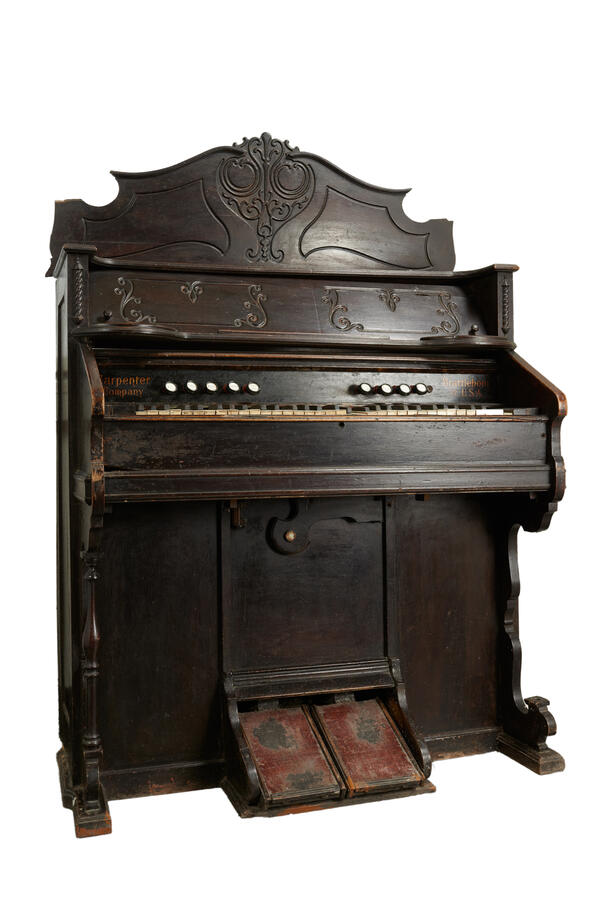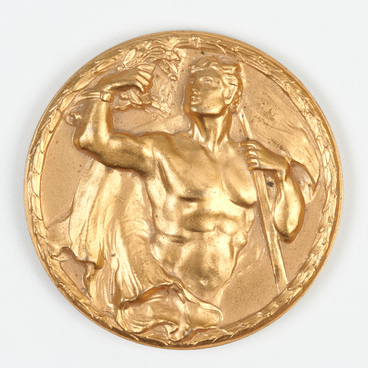In August 2007, the Nizovtsev-Voitov family from Ishim donated a rare musical instrument to the local history museum — the Physharmonica (derived from two Greek words meaning ‘bellows’ and ‘harmony’) or the reed organ. This is a keyboard-pneumatic instrument of the aerophone class of musical instruments, that is, the sound is produced by air vibrations. East Asia is considered to be the place of origin of the reed organ (or a harmonium), and the predecessor of the harmonium was the ancient Chinese mouth organ — the sheng.
The sheng consisted of a wind-chest, which served as the main air tank, and pipes with free reeds inserted into the wind-chest. Different types of such musical instruments were created. Due to the air flowing through the reeds, the harmonica and the accordion have a distinct sound. However, only Parisian Alexandre-François Debain managed to put the built-in bellows together with the piano keyboard. He patented the new instrument in 1848.
The name ‘physharmonica’ was introduced in 1818 by a musical master from Vienna Anton Haeckl, who improved the instrument.
The harmonium was popular among the Germans who settled on the territory of the Russian Empire. This instrument could be found in almost every house in the German villages located in the Kleban-Byk district in the Donetsk region up until 1938. The harmonium is shaped very similar to the piano and resembles a small organ. It is often used instead of the piano and is related to the mouth organ and the concertina. Famous companies produced such musical instruments: ‘Zimmerman’ — in Europe, Chicago Story Clark, and Acme Queen Parlor organ — in America. The instrument from the Museum collection was made by the American company E.P. Carpenter & Company, Brattleboro, Vermont, USA.
The harmonium was used as a household organ. Musicians use their feet to move the bellows: they press on to two wide pedals. Each pedal controls its bellows, and the desired sound is achieved by pressing the keyboard. The range of the harmonium is up to five octaves, it has ten register switches. Above the keyboard is a decorated shelf, it can be closed at an angle by a removable board with an embedded ornamental relief decor. Above the closed shelf is an open shelf, bounded by a high ornamented backdrop and carved sidewalls. Rectangular panels are on the sides of the case. The sound of the harmonium can be mimicked by many modern synthesizers and other electronic keyboard instruments.
The sheng consisted of a wind-chest, which served as the main air tank, and pipes with free reeds inserted into the wind-chest. Different types of such musical instruments were created. Due to the air flowing through the reeds, the harmonica and the accordion have a distinct sound. However, only Parisian Alexandre-François Debain managed to put the built-in bellows together with the piano keyboard. He patented the new instrument in 1848.
The name ‘physharmonica’ was introduced in 1818 by a musical master from Vienna Anton Haeckl, who improved the instrument.
The harmonium was popular among the Germans who settled on the territory of the Russian Empire. This instrument could be found in almost every house in the German villages located in the Kleban-Byk district in the Donetsk region up until 1938. The harmonium is shaped very similar to the piano and resembles a small organ. It is often used instead of the piano and is related to the mouth organ and the concertina. Famous companies produced such musical instruments: ‘Zimmerman’ — in Europe, Chicago Story Clark, and Acme Queen Parlor organ — in America. The instrument from the Museum collection was made by the American company E.P. Carpenter & Company, Brattleboro, Vermont, USA.
The harmonium was used as a household organ. Musicians use their feet to move the bellows: they press on to two wide pedals. Each pedal controls its bellows, and the desired sound is achieved by pressing the keyboard. The range of the harmonium is up to five octaves, it has ten register switches. Above the keyboard is a decorated shelf, it can be closed at an angle by a removable board with an embedded ornamental relief decor. Above the closed shelf is an open shelf, bounded by a high ornamented backdrop and carved sidewalls. Rectangular panels are on the sides of the case. The sound of the harmonium can be mimicked by many modern synthesizers and other electronic keyboard instruments.



